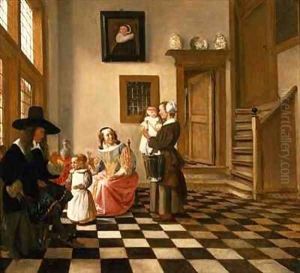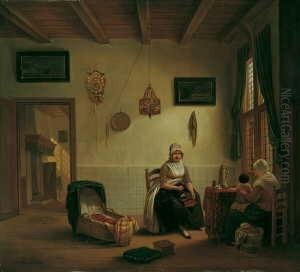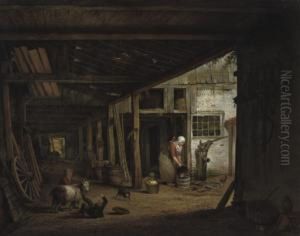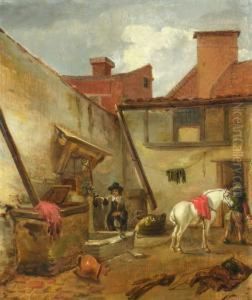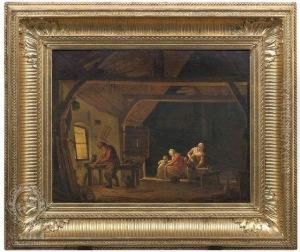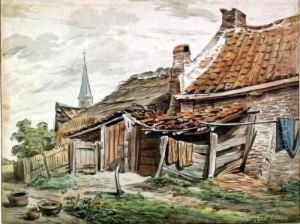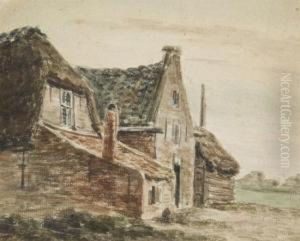Hendrik van der Burgh Paintings
Hendrik van der Burgh, also known as Hendrick van der Burgh or Hendrik van der Borght, was a Dutch painter who is not widely known in art history, primarily due to the scarcity of information regarding his life and works. Little is known about his life, including his birthdate, which remains unrecorded. However, he is believed to have been active in the 17th century, and his death is estimated to have occurred around 1664.
Van der Burgh's work falls into the Dutch Golden Age, which is renowned for its rich artistic output and the proliferation of genre painting—a style that depicted scenes of everyday life. Although his oeuvre is not extensive, van der Burgh is known for his genre scenes which often featured musical themes. This was a common motif in Dutch interior paintings, where the presence of musical instruments and people engaged in making music symbolized themes of harmony or love, and sometimes carried moralistic overtones.
There is some speculation that he may have been a pupil or follower of the famous Dutch painter Gerrit van Honthorst, who was known for his use of light and shadow to create dramatic effects, similar to the technique of chiaroscuro used by Caravaggio. This is due to the stylistic similarities seen in van der Burgh's paintings with those of Honthorst, particularly in the way he illuminated figures against dark backgrounds.
One of his known works, 'A Man Offering a Woman Coins,' which is held in the collection of the Mauritshuis in The Hague, is a prime example of his style. It shows a candlelit scene in which a man appears to be offering coins to a young woman, a subject that suggests moral undertones about virtue and vice prevalent in the period's genre painting.
Despite the fact that Hendrik van der Burgh is a lesser-known artist from the Dutch Golden Age, his works contribute to the broader understanding of the themes and artistic practices of his time. The lack of substantial records about his life and the limited number of his surviving works make it challenging for art historians to construct a comprehensive biography. As a result, his exact birth and death dates remain uncertain, and his artistic legacy is pieced together through the few paintings attributed to him that have been studied and preserved in art historical circles.
